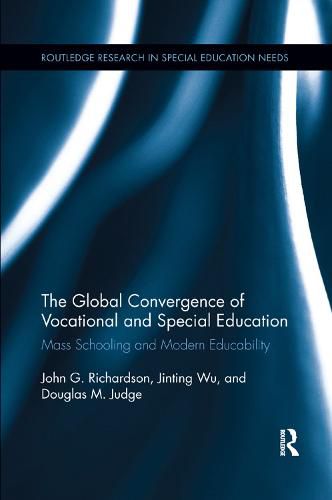Readings Newsletter
Become a Readings Member to make your shopping experience even easier.
Sign in or sign up for free!
You’re not far away from qualifying for FREE standard shipping within Australia
You’ve qualified for FREE standard shipping within Australia
The cart is loading…






The global trend in educational participation has brought with it a cross-national consequence: the expansion of students with special needs (SEN) placed in special education and the growth of low achieving students diverted to vocational tracks. This book explores the global expansion of special and vocational education as a highly variable event, not only across nations of considerable economic, political and cultural difference, but between nations with evident similarities as well. The Global Convergence of Vocational and Special Education analyzes how the concept of secular benevolence underscores the divergent and convergent trajectories that vocational and special education have taken across the globe. The authors embrace national differences as the means to observe two dicta of comparative research: similar origins can result in very different outcomes, and similar outcomes can be the result of very different origins.
$9.00 standard shipping within Australia
FREE standard shipping within Australia for orders over $100.00
Express & International shipping calculated at checkout
The global trend in educational participation has brought with it a cross-national consequence: the expansion of students with special needs (SEN) placed in special education and the growth of low achieving students diverted to vocational tracks. This book explores the global expansion of special and vocational education as a highly variable event, not only across nations of considerable economic, political and cultural difference, but between nations with evident similarities as well. The Global Convergence of Vocational and Special Education analyzes how the concept of secular benevolence underscores the divergent and convergent trajectories that vocational and special education have taken across the globe. The authors embrace national differences as the means to observe two dicta of comparative research: similar origins can result in very different outcomes, and similar outcomes can be the result of very different origins.